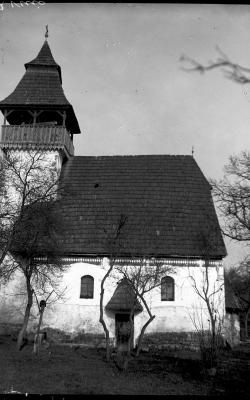In the traditional village, there was a strong connection between the community and the church. All holidays, important moments in human life (birth, marriage and death), as well as social life had the church at its center. Here was the judgment place of the village community where the community members met on holidays, here was the place where babies were baptized, where young people were married and ancestors remembered. The beginnings of rural education are also linked to the church. The Romanian peasant’s attachment to Christian values can also be found in the architecture of churches with slender, harmonious silhouettes, which delighted the eye with their proportions and decoration, being indispensable in all villages. This was also captured in the above image of the church, in a photograph taken by Romulus Vuia, in 1923, in Hunedoara county. The plan of the church, harmoniously proportioned, gives the church a well-balanced aspect making up a unitary whole, carefully executed. The side wall made of masonry, painted in white, has two semi-circular windows in the upper part, which frame an entrance. The wooden door is protected by a conical dome covered in shingles.
The bell-tower, which gives the building a picturesque appearance with a square-based wooden pavilion on top, houses the wooden semantron, generally used to summon the faithful to service and prayer.
The pavilion is extended with a slender tiered crest ceiling in four broken waters, covered in shingles. In the upper part of the crest, there is a cross as symbol of Christianity. The shingle roof of the church, separated from that of the tower, stands out for its steep slopes that have both aesthetic and practical value. The cliché, registered with title “Church”, inventory no. 117, is made in the gelatin-silver bromide technique on glass support, with dimensions of 9 cm x 12 cm.
Photo: Romulus Vuia, MET archive.











